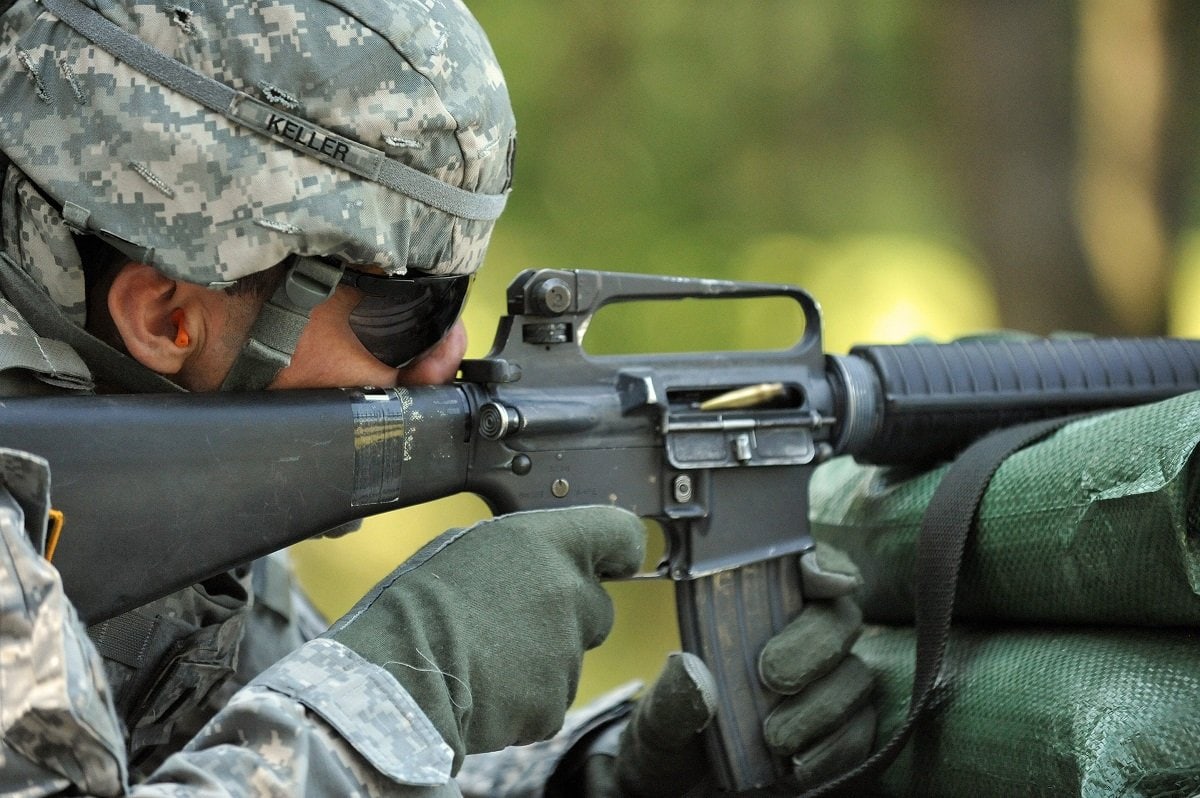The M16A2 wasn’t a horrible rifle, but we should be clear, it did have its share of problems. A former U.S. Marine explains why this rifle never lived up to its potential – The Marine Corps and their stance that every Marine is a rifleman border on obsession. The Marine Corps is big on their rifles, and sometimes that’s great; other times, well, not so much. Marine stubbornly clung to the M16A4, and before that, helped develop the M16A2. The Marine Corps led the development of the M16A2, and it was a big miss overall.
The Marines, and the military in general, wanted to push the M16A1 forward to build a better rifle overall. Sadly, the Marines’ obsession with rifles and long-range, Table 1 competitive-style shooting not combative shooting guided the M16A2; and this shows.
The good thing about the M16A2
Admittedly the M16A2 wasn’t a bad rifle. Yet, it just wasn’t a great rifle either and was a waste of potential. The M16A2 still utilized the M16 platform as its core weapon. This ensured reliability, accuracy, ergonomics, and ease of use were at the forefront of the design. The rifle never had major flaws like the British SA-80 or M14, but the minor flaws added up to make a less efficient combat rifle.
The problems with the M16A2
The Sights
The Marine Corps stressed accuracy in the M16A2. That doesn’t sound too crazy, right? Well, they focused on the accuracy of the rifle from a target-shooting perspective. This involves still positions, no gear, and a sling looped around the arm. Yet, accuracy in combat is a fair bit different.
The M16A2 sights were quite complicated and allowed for very minute changes for maximum accuracy into a bull’s eye target. These sights are great for shooting targets on a still range. However, under the stress of being shot at, no one will be making small adjustments to make tiny groups.
The front sight was thin and somewhat hard to see, especially in low light. The two peep sights were a great idea. The smaller sight was unneeded, but at least the larger peep sight made possible fast and accurate shooting. Simpler, larger sights would have been suited for the infantry rifle.
Burst feature
The military worried that Marines and Soldiers would just empty their magazines on full auto and not focus on accurate fire. So they installed a burst function. Burst is one of those compromises by which you get the worst of both worlds.
Burst triggers are complicated and often create a less reliable weapon. These triggers also just suck in terms of being light and smooth trigger pulls. They even affect the quality of a semi-auto trigger. Plenty of civilian AR15 lower parts kits offer better triggers than the M16A1. I would rather have a semi-auto-only rifle than a rifle with a burst feature.
Long length of pull
Length of pull is the measurement from the rear of the trigger to the end of the stock. The Marine Corps increased the length of pull by .625 of an inch. It doesn’t sound like much, but it made a big difference for smaller shooters. The long length of pull is great with a loop sling and in some of the wacky shooting positions used in marksmanship contests.
However, for combat, it sucked, especially when worn with body armor. It was just too long for most shooters, especially when we moved to a more modern shooting stance. Shooting the M16A2 in a squared-up athletic stance was somewhat difficult and uncomfortable. This made the rifle harder to control and harder to shoot accurately in combat.
The barrel profile
The M16A2 created a new barrel profile that no one ended up loving. The Government profile was created. The M16A2 used a lightweight barrel. They kept the gun light, balanced, and handy. The Government profile was created by making the front of the barrel thick and the rear thinner to accommodate a grenade launcher.
Why make the fronter thick? Well, apparently, the Marine Corps thought Marines were bending their barrels. So said it was from Marines using the barrel as a pry bar. Others suggested it was from Marines being overzealous with the bayonet. They thickened the barrel to resist bending…and maybe to enhance sustained fire, but the fact the rest of the barrel was thing makes this dubious.
Even after the Government profile was adopted, the gauges used to determine if a barrel is bent still came back negative. It turns out burs near the gauge port would accumulate metal from the projectiles and cause the Go/No Go gauge to always be no go. Barrels weren’t bent, and the idea turned out to be silly.
The heavy portion of the front barrel affected balance and made the rifle heavier than it needed to be.
The M16A2 rifle
When the M16A2 was designed, its creators adopted some interesting choices but which were proven to be a bit silly overall. The rifle would be great for the range but not so practical for combat. Yet, it was never a terrible rifle, but at the same time, it was just nowhere near as good as it could have been. Generations of women and men wielded it well, including during the beginning of the GWOT. However, how can we learn if we don’t explore our faults? We got any vets in the audience who used the M16A2?
Personally, I only used one in boot camp.
Travis Pike is a former Marine Machine gunner who served with 2nd Bn 2nd Marines for 5 years. He deployed in 2009 to Afghanistan and again in 2011 with the 22nd MEU(SOC) during a record-setting 11 months at sea. He’s trained with the Romanian Army, the Spanish Marines, the Emirate Marines, and the Afghan National Army. He serves as an NRA certified pistol instructor and teaches concealed carry classes.

